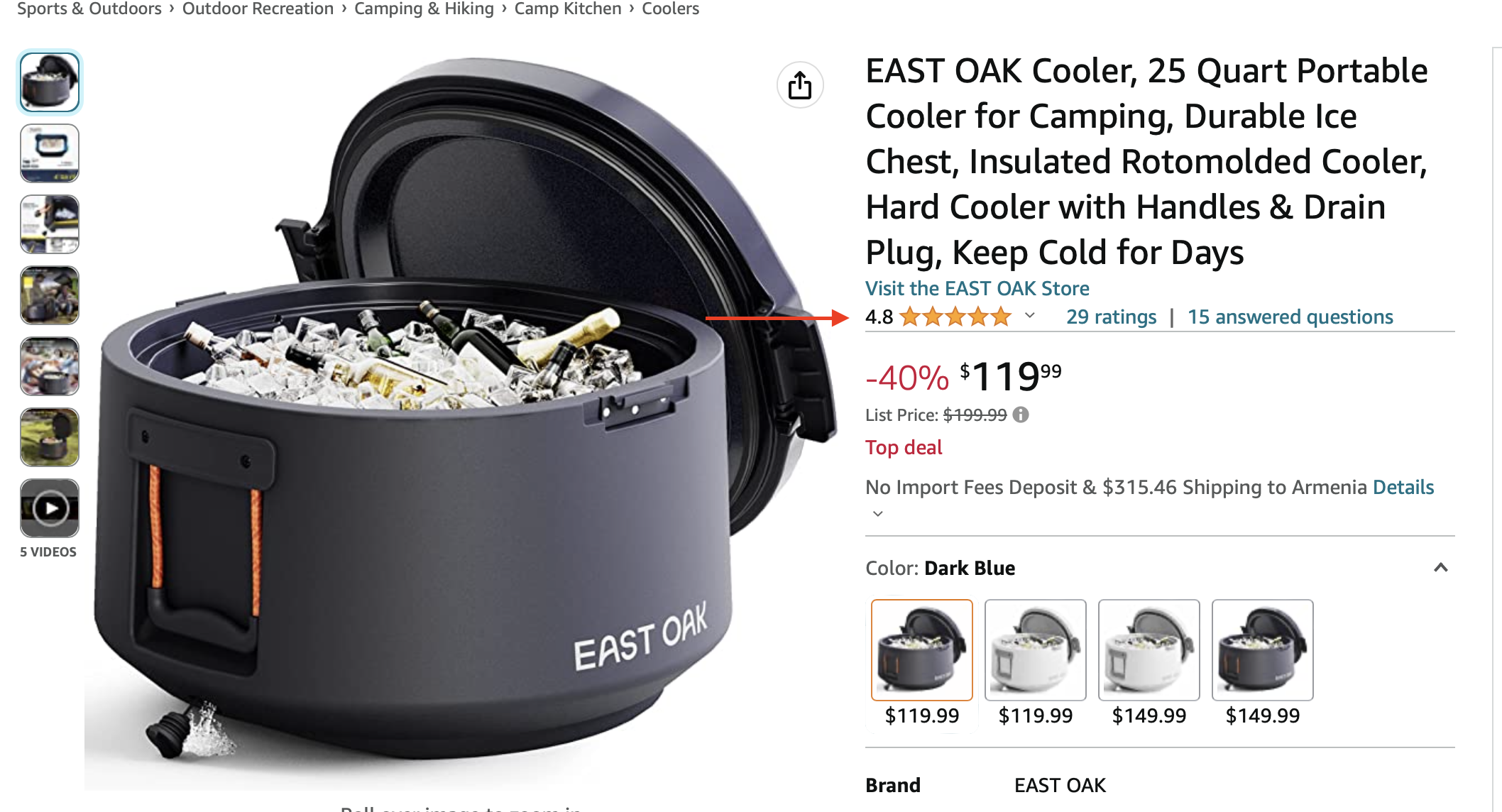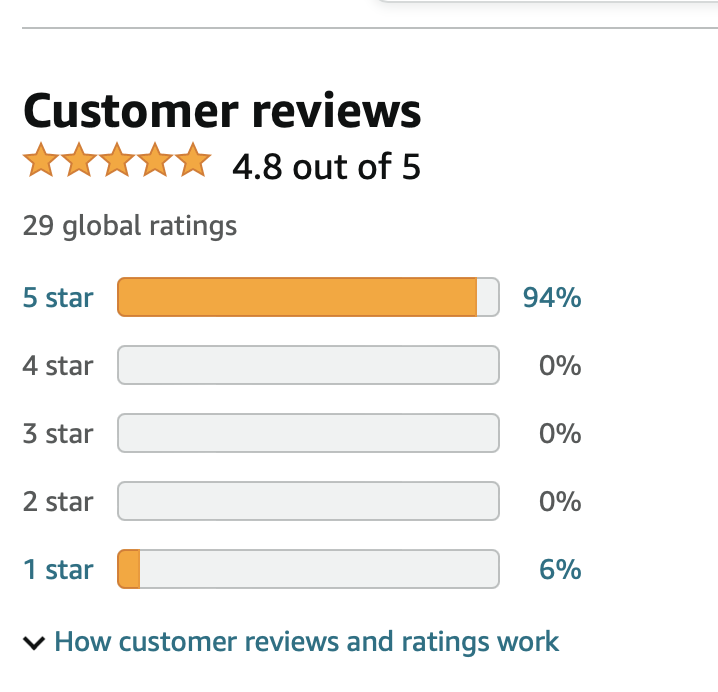Customer reviews are an essential component of the Amazon marketplace, and managing them effectively is critical for any seller looking to succeed on the platform. Positive reviews can help build trust with potential customers and increase sales, while negative reviews can be detrimental to your business’s reputation.
In this blog post, we will explore the best practices for managing Amazon customer reviews, including how to respond to both positive and negative reviews and how to encourage customers to leave feedback that can help boost sales. By following these best practices, you can effectively manage your Amazon reviews, build a positive reputation, and increase your sales potential on the platform.

Responding to positive customer reviews
When it comes to managing Amazon customer reviews, responding to positive feedback is just as important as addressing negative reviews. Here are some best practices for effectively responding to positive reviews:
- Express gratitude: Take the time to thank customers for their positive reviews. Show genuine appreciation for their support and for choosing your product. A simple “Thank you for your kind words” can go a long way in building a positive relationship with your customers.
- Personalize your response: Avoid using generic or templated responses. Instead, tailor your response to each individual customer and their specific feedback. Reference specific aspects of their review and demonstrate that you have read and acknowledged their comments.
- Highlight benefits and features: Use the opportunity to highlight the key benefits and features of your product that the customer mentioned in their review. This not only reinforces the positive aspects of your product but also provides valuable information to potential customers who are reading the reviews.
- Encourage further engagement: Invite satisfied customers to reach out to you directly if they have any questions or concerns. Provide them with a contact email or a customer support link. This demonstrates your commitment to excellent customer service and helps build a loyal customer base.
- Share positive reviews: Consider leveraging positive reviews in your marketing efforts. With the customer’s permission, you can feature their feedback on your website, social media platforms, or in promotional materials. This can enhance your credibility and attract more customers to your products.
Addressing negative reviews professionally
Negative reviews are inevitable, but how you handle them can make a significant impact on your business’s reputation. Follow these best practices to effectively manage negative reviews:
- Respond promptly: Time is of the essence when it comes to addressing negative reviews. Aim to respond within 24-48 hours to show that you take customer concerns seriously and are committed to resolving any issues.
- Remain professional and empathetic: Maintain a calm and professional tone in your response, regardless of the tone of the negative review. Show empathy towards the customer’s experience and acknowledge their concerns. Avoid getting defensive or engaging in an argument, as this can further damage your reputation.
- Investigate and offer a solution: Take the time to investigate the customer’s complaint thoroughly. If a legitimate issue is identified, offer a solution or resolution that addresses their concerns. Be transparent about any steps you are taking to rectify the situation and ensure it doesn’t happen again.
- Move the conversation offline: If appropriate, provide contact information or a customer support link and encourage the customer to reach out directly. This allows for a more personalized and private conversation, where you can address the issue in greater detail and work towards a satisfactory resolution.
- Learn from negative feedback: View negative reviews as an opportunity for improvement. Analyze common issues raised in negative reviews and use them to enhance your product, customer service, or shipping processes. By demonstrating that you value customer feedback, you can turn a negative experience into a positive one and show potential customers that you are committed to continuous improvement.

Encouraging customer feedback
Generating a steady stream of customer reviews is vital for boosting your sales on Amazon. Here are some effective strategies for encouraging customers to leave feedback:
Provide exceptional customer service
Deliver outstanding customer service at every touchpoint. Respond promptly to inquiries, address concerns promptly, and go above and beyond to exceed customer expectations. Satisfied customers are more likely to leave positive reviews.
Optimize the post-purchase experience
Create a seamless and user-friendly post-purchase experience for your customers. Include a personalized thank-you note with each order, offering assistance if needed and encouraging customers to leave feedback. Make the feedback process as effortless as possible by providing clear instructions and direct links to leave a review.
Incentivize reviews with follow-up emails
Send follow-up emails to customers after they have received their products. Express your gratitude for their purchase and kindly ask them to share their experience by leaving a review. Consider offering a small incentive, such as a discount on their next purchase or a chance to enter a giveaway, to further motivate customers to leave feedback.
Utilize Amazon’s “Request a Review” feature
Take advantage of Amazon’s “Request a Review” feature available through the Seller Central dashboard. This automated tool allows you to send review request emails directly to customers who have purchased your products. Customize the email template to reflect your brand voice and encourage customers to share their thoughts.
Leverage product inserts
Include a carefully designed product insert in your packaging that encourages customers to leave a review. Provide clear instructions on how to leave a review on Amazon and express your appreciation for their feedback. Remember to comply with Amazon’s guidelines regarding inserts, ensuring they are informative, non-promotional, and add value to the customer’s experience.
Engage with customer questions and comments
Actively engage with customers who have questions or comments about your products. Respond promptly and provide helpful information. By demonstrating your commitment to customer satisfaction, you encourage customers to share their experiences through reviews.
Follow Amazon’s review policies
Familiarize yourself with Amazon’s review policies and guidelines to ensure you are encouraging reviews within the platform’s rules. Avoid any practices that violate Amazon’s policies, such as incentivizing customers to leave positive reviews or posting fake reviews. Non-compliance can result in penalties, including the removal of reviews or even suspension of your seller account.
Genuine reviews from satisfied customers will not only boost your sales potential but also build trust and credibility for your brand.

Final thoughts: Amazon customer reviews
In conclusion, managing customer reviews is an essential aspect of any successful Amazon seller’s business strategy. By following the best practices outlined in this blog post, you can effectively manage your reviews.
Remember to respond promptly and professionally to both positive and negative reviews, and take the opportunity to learn from any negative feedback to improve your products and customer service.
Encourage customers to leave feedback by providing excellent customer service and a seamless shopping experience. Consider using tools and software that can help you manage your reviews more efficiently. With a strong review management strategy in place, you can build trust with potential customers, increase your sales, and achieve success in the competitive world of Amazon e-commerce.
0


